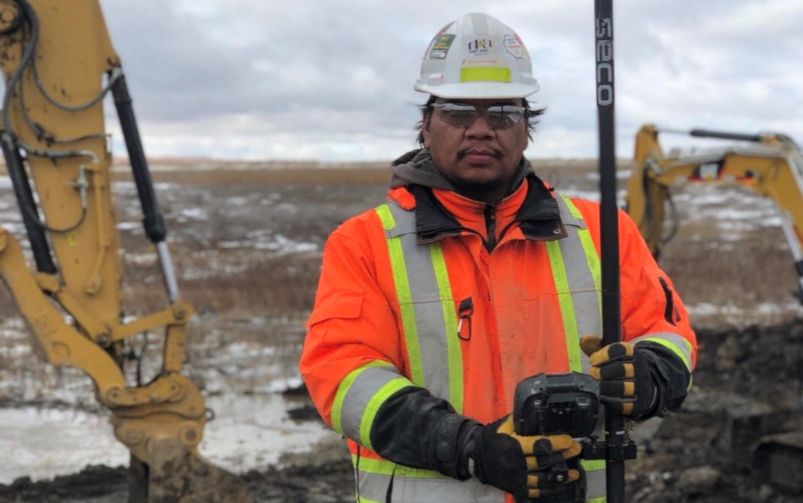All sustainable solutions to Earth’s energy and resource challenges are inherently interdisciplinary. In the context of the graduate program I direct at the University of Texas at Austin, the word “sustainable” means the solution should be lasting and must meet three criteria:
1. It must be based on sound science and technology.
2. It must be consistent with policy that contemplates the welfare of society.
3. It must be financially viable to attract the interest of investors.
I view this as solving three simultaneous equations, which, if achieved, will produce enduring solutions that will allow society to prosper well into the future. It follows that students in energy and earth resources must have a sound background in science and technology, public policy, and finance to be effective leaders. It is interesting that of the three criteria, science and technology garner the greatest attention. Indeed, most businesses involved in exploration and development of Earth’s resources like to paint themselves in those colours. My experience has been that technological challenges are invariably surmounted by creative scientists and engineers. The biggest issues exist where technological solutions meet society and financial reality.
These considerations by themselves would make for a challenging graduate program. However, there is another dimension of complexity, which I will illustrate with three examples. The first is the energy-climate nexus. A large measure of our prosperity is due to the availability and abundance of energy. Virtually all of our energy needs have been met by cheap, plentiful and reliable fossil fuels. However, extensive measurements and good science provide compelling evidence that the combustion of fossil fuels is also the most fundamental cause of global warming, which is driving the transition to sustainable energy sources.
The second is the energy-water-food nexus. Consider the 2012 drought in northern India. It left farmers in the country’s “bread basket” without enough surface water for irrigation, so they resorted to electric pumps to draw up groundwater. The depleted hydro reservoirs could not meet the increased power demand. As a result, three major grids failed and nine per cent of the world’s population was left in the dark.
Related: Stephen de Jong on being a young entrepreneur in mining
The third is the energy-minerals-water nexus and has been in the recent news. It relates to current concerns about over-pumping lithium brines in the Chilean Atacama Desert, which happens to be my birthplace. There, fundamental questions revolve around the ability of nature to replenish produced water in the driest place on earth. These lithium resources are among the largest and most important supplies of a metal central to energy storage. Directly adjacent to the Salar de Atacama, also in the Atacama Desert, are some of the biggest porphyry copper deposits in the world, which require water to produce another energy-critical metal.
These examples are neither contrived nor exaggerated. They are intended to convey the tight linkages between what many view as independent problems. As the world’s burgeoning population demands increasing production of Earth’s resources, we will see increasing interdependencies, conflicts and solutions with unintended consequences between seemingly disparate resources, the environment and society. To address these challenges without a multidisciplinary approach is folly.
Most of the students enrolled in the Energy and Earth Resources graduate program at the University of Texas have undergraduate degrees in science or engineering and have themselves recognized the inadequacy of just science or engineering to develop viable solutions. Our mission is to offer multidisciplinary studies that engender interdisciplinary solutions. To this end, every student in the program must take a core curriculum of four courses:
1. Geology of Earth’s resources to understand how Earth controls the distribution of natural resources
2. Computational data analytics to gather and analyze large data sets and derive useful information
3. Decision analysis to make prudent energy and earth resource decisions in the context of risk and uncertainty
4. Energy/resource finance to determine the commercial viability of a proposed solution
In addition to the core courses, every student must take at least one course in the technology, policy and finance concentrations and must undertake research and write a thesis in their chosen area of concentration. The objective of the core is to build knowledge and skills useful for any of the three concentrations. The additional electives ensure further multidisciplinary breadth and the thesis ensures depth in the area of concentration.
When I completed my graduate studies in the early 1980s, the oil and gas business was about the only game in town for somebody interested in energy. While it provided me with a wonderful career, the options for future energy practitioners are vast and diverse. Beyond oil and gas, they include renewables, the grid, evolving utility models, managing energy efficiency on the demand side, carbon capture and sequestration, battery technology, the supply chain of strategic metals, water management, optimization of energy options and financial modelling, as well as the policy, law and regulation related to all of the above. This is but a small sampling of the opportunities for curious, innovative and committed students. And it further underscores the need for a multidisciplinary education that prepares students to nimbly navigate the dizzying array of energy and earth resource challenges they may encounter in their careers.
Richard Chuchla is currently the Director of the Energy and Earth Resources graduate program at the University of Texas at Austin. Prior to assuming his current position, he spent 35 years in the extractive industries (minerals, coal, oil and gas) exploring basins around the world. His experience includes technical and executive positions in research, exploration, development and corporate strategic analysis.
This article is part of our Future Prospects series, brought to you by Stantec. Running throughout 2019, this series will feature articles on how the mining workplace is changing and the strategies young professionals will need to build themselves a career in the digital mining industry.




